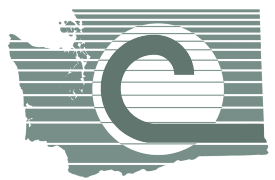Substitute House Bill 1720 changes House Bill 1720 in some significant ways. One of the most significant is that instead of a single program created and administered by the Washington State Conservation Commission, a parallel program would be established through the Salmon Recovery Funding Board. This creates unnecessary confusion for state agencies and for landowners and resource users who choose to participate in riparian restoration programs.
WACD’s position on HB 1720 was PRO but we are OTHER on SHB 1720. To be clear, WACD continues to support the important job of restoring degraded riparian habitats. The State Conservation Commission is the most appropriate entity to create and administer a voluntary, incentive-based grant program to achieve riparian restoration where most needed.
WACD Executive Director Tom Salzer submitted the following written testimony on February 19, 2023, in advance of the public hearing scheduled for 8:00 am on February 20th by the House Committee on Capital Budget:
While the Washington Association of Conservation Districts continues to support the intent of HB 1720 to restore critical riparian habitat, our position on SHB 1720 is OTHER, for the reasons described below.
[1] By creating two programs that serve the same fundamental purposes, SHB 1720 creates unnecessary confusion among agencies and among landowners who choose to participate in riparian restoration actions.
[2] By creating two programs, SHB 1720 causes two state agencies to run parallel administrative functions to administer the programs. This is not a cost-efficient approach for the State. In truth, it appears non-sensical when viewed from outside state government.
[3] The State Conservation Commission is the most appropriate agency to create and administer a voluntary, incentive-based riparian grant program because it is governed by a body that includes representation from several natural resource agencies, two Governor appointees, and conservation district representatives. This structure is entirely consistent with the purposes of a riparian grant program and the intersection of voluntary, incentive-based practices with the goals of the State.
[4] The State Conservation Commission is the best agency to create and administer a voluntary, incentive-based riparian grant program because it directly oversees and guides local conservation districts that utilize a long-established, trust-based, effective conservation delivery system. The strong, trust-based relationships that conservation districts have with landowners and resource users will promote better program participation than if the grant program was administered elsewhere. Conservation districts successfully implement riparian restoration practices that succeed not only because site-specific characteristics are considered in the design and delivery of such practices, but because they are able to coach and support landowners in the maintenance of these practices.
